Print vs. digital is a debate that consumes the magazine world, with the pleasure of deep intellectual satisfaction through reading on a rainy day from a printed copy pitted against the immediacy of the internet. There are some publications though that feel there is room for both, that believe in integration over separation, and combine scholarly, artistic, and literary pieces with photos, or videos or both.
One such magazine is Triple Canopy, a New York based online magazine, founded in 2007, and whose first issue was published on March 17, 2008. Currently it has around seven full time staff and 18 more part-time and project based staff. Their website has received 1.2 million unique readers, and averages around 35,000 page views per month. Triple Canopy’s Editorial Director, is Molly Kleiman, who has worked with the magazine since its inception, and is visiting Prishtina as part of Stacion’s Summer School for a series of lectures and to teach a course.
Kleiman says that Triple Canopy often gets defined in different ways by different circles of society, for example artists define it as a literature oriented magazine, while writers feel it is arts based. The online magazine has often been praised for taking a new-media approach to publication, while incorporating more old-school ideals, including publishing a book.
“We don’t see ourselves as competing with news agencies or blogs, but rather as contributing to a different aspect of the publishing ecosystem,” says Kleiman. She often dwells on “the relationship between offline and online activities, the ways in which the projects move through different formats and spaces.”
In the information age, when patience is not a word usually associated with online behaviour, Kleiman says that the team behind the website wants it to be used “in the same way as you might visit a gallery and spend some time in front of an artwork,” meaning closely inspecting, reading, and immersing yourself just as you do in a beautiful gallery.
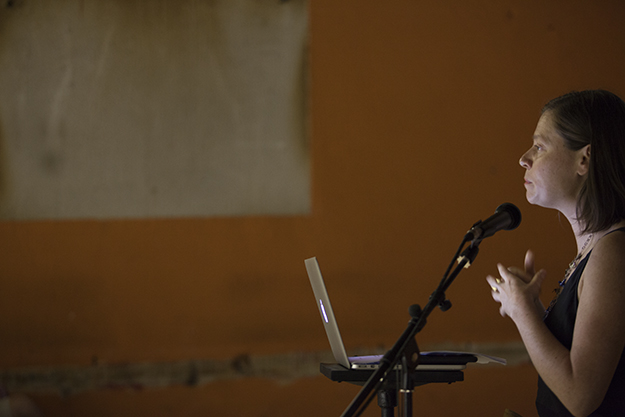
Photo: Majlinda Hoxha / K2.0.
Kleiman is no stranger to the Balkans, having lived in Sarajevo for two and a half years. K2.0 caught up with her on her second trip to Kosovo, to discuss the magazine, working in a range of media disciplines and her latest project on the wilder areas of New York’s Central Park. K2.0 spoke with Kleiman on July 11, 2017, and our conversation continued over email in the days that followed. Our correspondence has been condensed and edited for publication.
K2.0: Could you tell us about the founding of Triple Canopy. Where did the idea begin, and what was your role in it?
It began as a series of conversations in living rooms. There were many of us in those early days of brainstorming and sharing various historical and contemporary examples of experiments in publications that interested us.
At the time I was living in Sarajevo, and since I’m from New York, I would travel back and forth to visit my family so I was participating in these sort of more casual, open conversations. We realised that more and more of what we were reading was online, and that the web is where we first encountered literary and visual art works, and that is where these works were being circulated, disseminated, and also legitimized.
But we were also feeling frustration with those reading methods. If you can remember, this was before the iPhone, it was just before any e-Readers, so web design was kind of messier and crowded. So the first proposition was to try and create a space using this medium that we had come of age with, and that we were using anyway on a daily basis, and to engage with it as a material — the same way that other artists, and writers had used the page as a material.
I joined as one of the editors. When we first started, we created our own titles basically (laughs). For the second issue of the magazine I contributed with a piece of writing, that was a sort of longform reported essay that I had done from Bosnia.
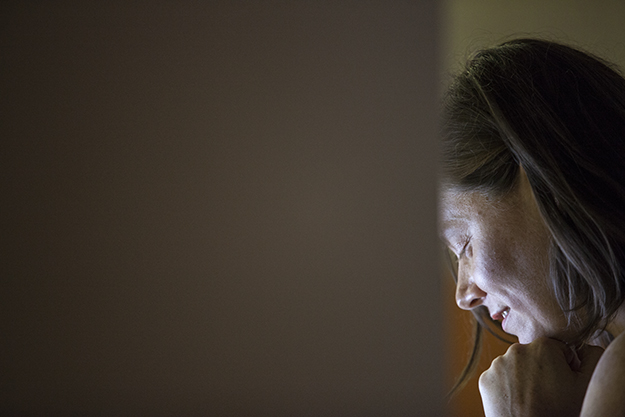
Photo: Majlinda Hoxha / K2.0.
Starting based on enthusiasm and ideas can sometimes be an arduous undertaking. How did you get on in the beginning?
The first year or so none of us were paid. Most people who were involved in developing the magazine, had also written for it, or were close friends or collaborators, because we had no budget at first. Then, very quickly, we applied for NGO status and got our papers in order, and we got the first bit of funding. The “Andy Warhol Foundation” was really helpful to us. They funded us through a channel of funds that no longer exists, but it was for “Arts Magazines” specifically, so that really changed things for us. The first thing that we did was starting to pay our writers. We thought that was the most important thing. Only later did we start to pay ourselves.
I think it was also that at that time we were all early to mid-twenties, we had part-time jobs, or day jobs that satisfied us to a degree in various fields, but we were working more in entry level positions, and did not have the creative control we desired. The magazine gave us a space to experiment, collaborate with our peers, and also to reach out to artists and writers who were a bit further along in their careers who we really admired and to work closely with them.
But I think the success of publication, the sustainability of the publication is largely due to the commitment and seriousness of the participating editors. Also, from very early on we had a couple of people who were interested in thinking about what it means to start an organisation. They saw that as their creative experiment, rather than working with artists and writers. They wanted to think about what it means to start an organization from the ground up.
The issues of Triple Canopy are very distinct from each other, one can be about vanity, while another is about neuroscience. Can you describe the process behind the launching of a new issue?
Each issue of the magazine is oriented around a set of questions, so rather than a key term or a theme, we have an area of research, an area of concern that we want to explore together. We then set out as editors, we do a bit of research and reading around the topic, and commission artists, writers, scholars, people from various fields to engage in this topic with us. With each project, from the very beginning, it starts off as a conversation between us and the possible contributor.
People do not send us something that it is finished, a finished piece of writing. Rather we begin a conversation. Then for artists, we develop visual art work specifically for the magazine. For writers, we publish works of poetry and literature. But we also publish the work of researchers, writers and scholars that have been working on a book or a large body of research for a long time. With them, we also produce these sort of multimedia essays, long form essays that incorporate a lot of primary source materials.
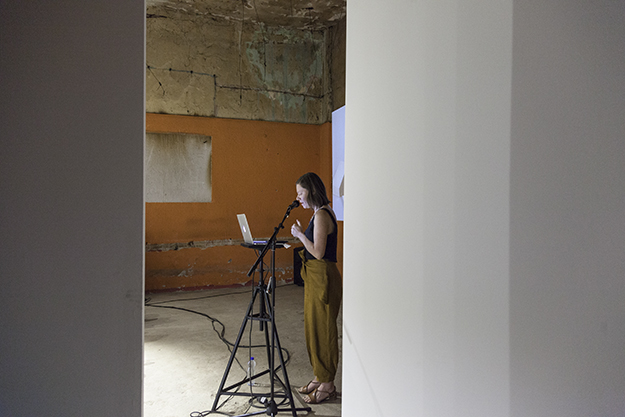
Photo: Majlinda Hoxha / K2.0.
Does Triple Canopy have a specific target audience, or are there particular parts of the society who like reading it more due to its content?
It is funny that when we talk to artists, they think of us more like a literary publication. When we talk to writers they think of us as an arts publication. When we talk to scholars they sometimes do not know what to make of us. So I think that we have this hybrid approach to publishing, that can be a bit confusing, but I think that is also alluring (I hope). It can be different things to different people. Even when we are applying for grants, sometimes we describe the magazine in very different ways because we do many, very different things. Some people might know us more from public programs we organize.
Sometimes, as a way both to support the publication and gain extra resources, but also to increase visibility, we also partner with larger institutions for larger scale and more ambitious programs. So that is another way that we can expand the readership, or the viewership of the magazine.
What other activities do you organise to engage more with the readers and the public?
Normally at our own space in Manhattan, we organize live events about twice per month. Usually we think of it as a space for extending ideas that we have published in the magazine, extending them from a specific digital project and opening up the discussion. The event serves as a sort of comment function for the public and enabling artists or writers to present their work, perhaps in conversation with someone else who might be from a different discipline.
Often the events take the form of a cross-disciplinary series of presentations and conversations. So we might have a reading by a poet, followed by a short screening by a filmmaker, followed by conversation moderated by one of the editors who is joined by a scholar who is interested in topics related to their work.
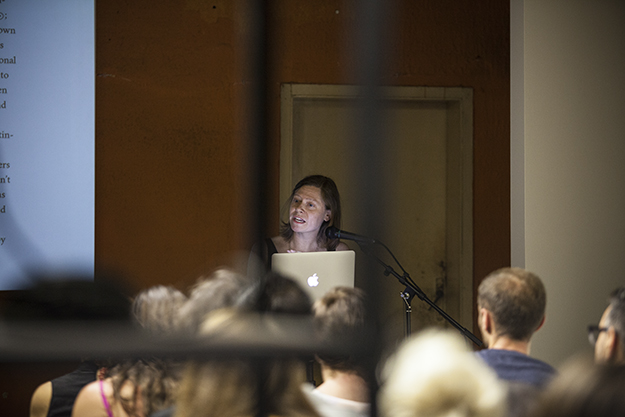
Photo: Majlinda Hoxha K.20.
The company has also produced a number of books, including “Speculations (“The future is ______”).” Could you please elaborate further on that project?
That project was initiated in 2013, when we were invited by MoMa PS1. They were organizing a very large exhibition called EXPO 1: New York, focused on the economy, ecology and crisis.
They invited us to participate by organizing the public programing component. We wanted to approach this holistically, and to make sure that we developed a project that felt connected to the larger exhibition but also self contained, and to create the space to workshop ideas and develop issues related to those themes.
The title of our contribution to the exhibition, was: “Speculations: The future is…” then a blank. We invited artists and writers, but also economists, scientists, anthropologists, philosophers, and political organisers to join us and speculate about a future that they would want to see. We invited them to think not in a utopian sense, but perhaps in a realistic sense, about what something slightly better might be, and then, what demands that would put on us in the present, in order head in that direction.
The phrase that came out of this invitation was ‘dark optimism,’ we were inviting people to speculate about better futures, even if they were skeptical, worried. Each day of the program series was oriented around a different possible future and a different speaker. The speakers would participate in two ways. In the early afternoon they would lead a seminar conversation with the members of the general public, and then later in the afternoon they would present a lecture followed by a Q&A. So each day envisioned a different future; the future without prisons, or the future without hunger, different possible notions.
Following these activities, we had hundreds of hours of audio, and all of this research that we had done in preparation. We then discussed how to package or edit or further develop all this material for the publication of the magazine.
We also considered the live events themselves as content for the magazine. We published an archive of recordings of the live lectures, and some of the seminar conversations. We then also returned to some of the participants and some additional contributors, who had not participated in the initial series, and invited them to develop longer contributions for the magazine, that we published as digital projects.
Lastly, we created a printed book. When we developed the printed book we were thinking okay why a printed book? What can be bound in this paper codex that might not be articulated in the website or the live events? So the book is structured as a lexicon. We went back through all the audio recordings and then picked out key terms that continued to resurface again and again. Some of them were more expected like ‘democracy,’ ‘capitalism,’ ‘education,’ language,’ etc., others were surprises, like ‘zombies.’ What was interesting for us was that these words, despite sometimes being humorous, were also being taken very seriously. The book includes brief excerpts from various speakers addressing each term or concept, often in nuanced, at times even contradictory ways.
The book is also in this light blue, that looks sort of like a survival guide. The format is quite small and cute and fat, and one of the editors joked as we talked about the design, that we wanted it to fit in the pocket of a motor jacket, so that if the apocalypse does come you can carry it around with you, as a sort of finding aid or reference guide.
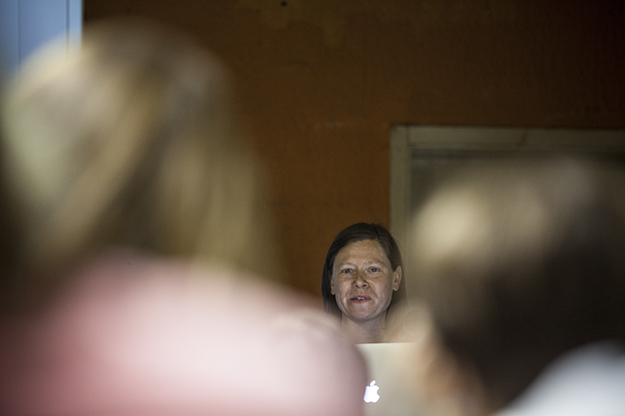
Photo: Majlinda Hoxha / K2.0.
You said that you often engage in different projects. What is an editorial project currently under development?
Right now I’m working with a literary scholar named Anjuli Raza Kolb, and an architect, Jaffer Kolb. They are a brother and sister duo and who are working on a project about the history of a part of Central Park, the Ramble. The Ramble was deliberately planned to look wild, whereas the rest is more manicured and is in keeping with the highly gridded system of Manhattan. This area in the northern part of the park feels very wooded, you can get kind of lost.
So they are interested in this part of the park looking at two moments of its history. Most recently in the eighties and nineties, it was site for gay cruising, so it was a site for love and encounter, but also it was a flash point during the AIDS crisis.
They are interested in the history of that site as it pertains to queer history in New York but they are also interested in the very earliest moments of the park’s creation, when the master gardener of the park, Ignatz Anton Pilat, was planning it. He talked about it as a planned wild. The Kolbs were sort of wondering whether creating a park in such a way is almost encouraging non normative behaviours, and allowing spaces of encounters outside of what is conventionally acceptable.
So they are looking through a really amazing archive of the original plans of the park, the letters that were written about the park, the drawings, the prints. They are also looking through films, at Gay Guides to New York that were printed even as early as the 1940s, as well as oral history, and accounts from the Gay Activists Alliance which was an advocacy group that existed in New York during the AIDS crisis. They are pulling from all these disparate sources to try and tell the story. It is a really interesting time stamp, and a really interesting layer of the map of New York, to think about what the best cruising spots were, where you could wander.
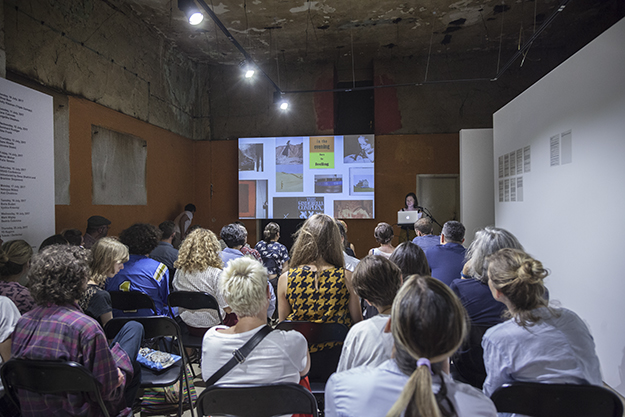
Photo: Majlinda Hoxha / K2.0.
From your experience in engaging in different social circles and individuals while working for the magazine, what do you hold as important that can relate to the people in Kosovo as well?
I am very excited to be here, and very excited to speak with young aspiring curators, writers, and artists. Through these meeting and conversations I can have a better sense of what propositions people are making about their own city and context.
One thing that we are always thinking about at Triple Canopy is how can we take a conversation that exists in one form and transform it or translate it into other spaces, other times, other formats, and thus circulate it in different ways, in larger circles, in new circles.
It is exciting seeing how K2.0 is thinking about the printed issue of the magazine, about the live conversations in the garden, and thinking about the website. Or how ‘Stacion’ is thinking about not only the physical gallery but the classrooms as well. It is beautiful when those working in the region can congregate together and have this exchange and learn from this practice.K
Feature image: Majlinda Hoxha / K2.0.

